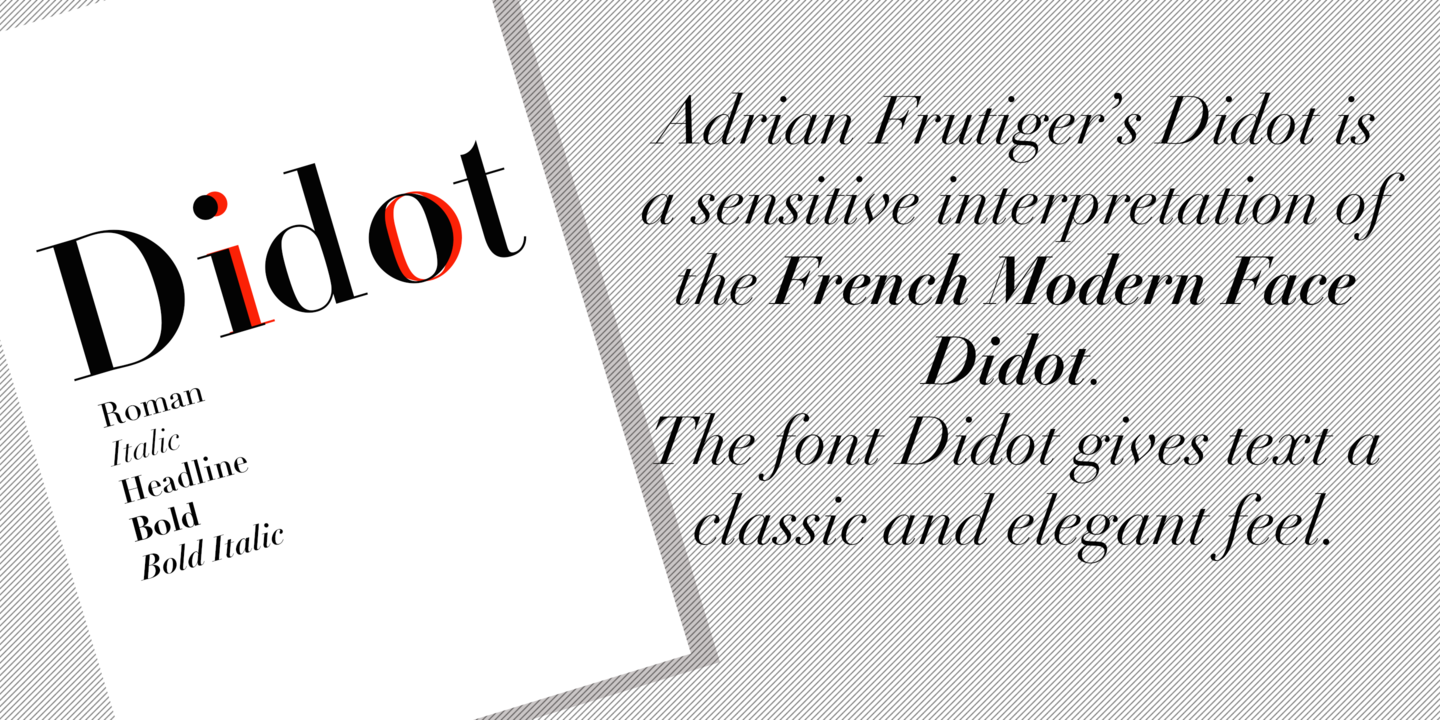




Información de fuentes
Hemos recopilado toda la información más importante sobre la fuente Linotype Didot Std Bold. A continuación se muestra una tabla sobre la versión del archivo de fuente, la licencia, los derechos de autor, el diseñador y el nombre del proveedor. La información se toma del archivo de fuente "TTF".
| Nombre de la familia de fuentes | Linotype Didot Std Bold |
| Nombre de la fuente | Linotype Didot Std Bold |
| nombre del estilo | Bold |
| Identificador de fuente | com.myfonts.easy.linotype.didot.linotype-didot-std-bold.wfkit2.version.52wN |
| Versión de fuente | 2.000 Build 1000 |
| Marca comercial | Linotype Didot is a trademark of Monotype GmbH and may be registered in certain jurisdictions. |
| Diseñador | Adrian Frutiger |
| Fabricante | Monotype GmbH |
| Derechos de autor | Copyright © 2014 Monotype GmbH. All rights reserved. |
| Descripción | For about 100 years in the eighteenth and nineteenth centuries, several members of the Didot family were active in Paris as designers. They were also printers, publishers, typefounders, inventors, writers and intellectuals. Around 1800, the Didot family owned the most important print shop and font foundry in France. Pierre Didot published books and prints set in typefaces designed and punchcut by his brother, Firmin Didot. The statuesque, clear forms of the Didot alphabets are representative of the time, and are quite similar to those designed by Giambattista around the same time in Italy. These types are in the style known as "modern" - meaning they are characterized by extreme vertical stress and fine hairlines contrasted by bold main strokes. Linotype Didot was drawn by Adrian Frutiger in 1991, and is based on the fonts cut by Firmin Didot between 1799 and 1811. Frutiger also studied the Didot types in a book printed by the Didots in 1818, "La Henriade" by Voltaire.Linotype Didot is the right choice for elegant book and magazine designs, as well as advertising with a classic touch. |






Comentarios